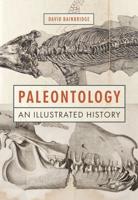Publisher's Synopsis
Excerpt from American Hydroids: Part 1, the Plumularide E With Thirthy-Four Plates
This work (Special Bulletin No.4) is one of a series intended to illustrate the collections belonging to, or placed in charge of, the Smithsonian Institution and deposited in the United States National Museum.
The publications of the National Museum consist of two series, the Bulletin and the Proceedings.
The Bulletin comprises complete technical works of considerable size, zoological monographs, handbooks of the Museum collections, records of scientific expeditions, etc. Most of the volumes hitherto published have been octavos, but a quarto form has been adopted for works like the present one, which, on account of the character of the illustrations, require a large page.
The Proceedings are intended primarily as a medium of publication for shorter technical papers, many of them of a preliminary character, containing newly acquired facts relating to biology, anthropology, and geology, new schemes of classification, descriptions of new forms of animals and plants, discussions of nomenclature, and the diaries of minor expeditions.
The Proceedings are issued annually to libraries in volumes of about 1, 000 pages. A small edition of each paper is distributed in pamphlet form to specialists in advance of the bound volume.
Papers of more general popular interest are published in the appendix to the Annual Report.
Papers intended for publication in the Proceedings and Bulletin are referred to an advisory committee composed as follows: Frederick W. True (chairman), James E. Benedict, Otis T. Mason, Leouhard Stejneger, Lester F. Ward, and Marcus Benjamin (editor).
About the Publisher
Forgotten Books publishes hundreds of thousands of rare and classic books. Find more at www.forgottenbooks.com
This book is a reproduction of an important historical work. Forgotten Books uses state-of-the-art technology to digitally reconstruct the work, preserving the original format whilst repairing imperfections present in the aged copy. In rare cases, an imperfection in the original, such as a blemish or missing page, may be replicated in our edition. We do, however, repair the vast majority of imperfections successfully; any imperfections that remain are intentionally left to preserve the state of such historical works.










